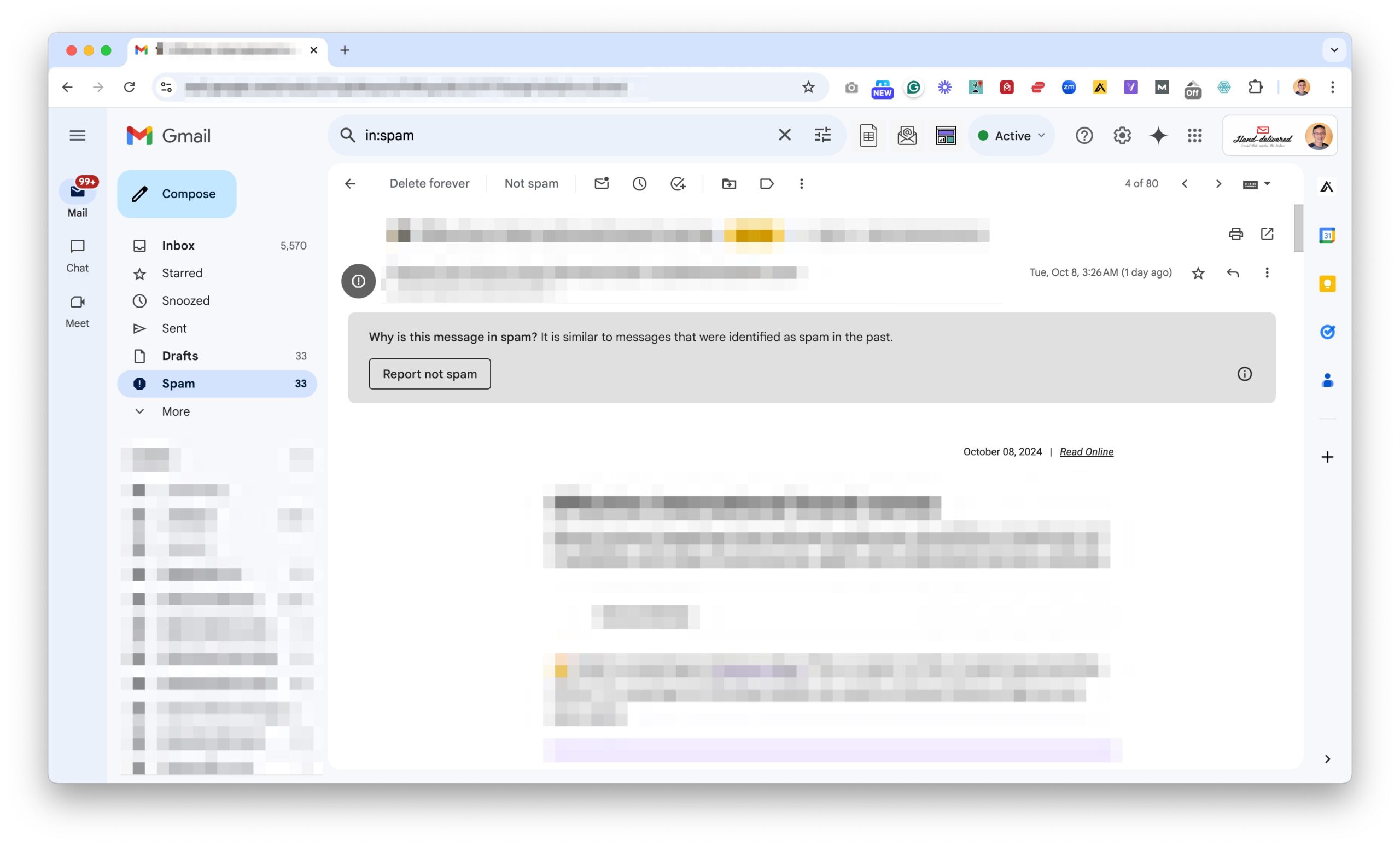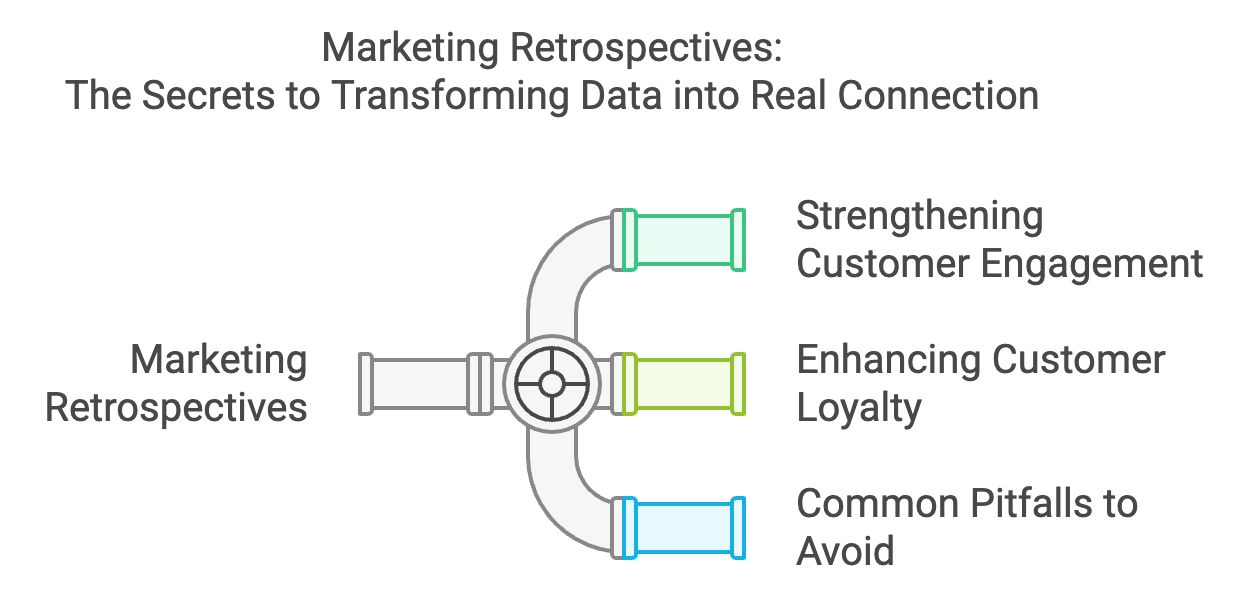A test I always do with potential clients is to ask them to check the SPAM folder of their personal email account.
I can bet that within two or three screen scrolls, they will find a legitimate message from a known sender they subscribed to receive, but it’s in the SPAM folder.
Doubt it? Try the test: check your spam folder and then tell us the result.
It happened to me today (again):

One of the reasons this happens is that email providers, like Google and Microsoft, do everything to keep your inbox “clean” and try to identify what they think might be SPAM to avoid delivering it to your main folder.
As a result, some legitimate messages generate false positives and go to SPAM.
In this example, besides being a legitimate message, it was from someone I admire.
So, what did I do?
- Removed from spam
- Marked as important (the star)
- Clicked on some links
- Replied to the message telling exactly what I reported in this post and suggesting that the sender check if their engagement rates were below average for this campaign. If so, contact their most engaged readers, asking them if the same happened. If yes, ask them to do the same.
Email providers record all these actions, which are considered positive engagement signals that will benefit future campaign sends.
By the way, this is a tactic you can use in your daily routine: send your campaigns first to the most engaged readers and, sometime later, to the others.
The positive engagement from the subscribers of the first send will favor deliverability for the subscribers of the second send.
Do you have any questions about email deliverability? Comment below, and I’ll answer.
Until next time,
Fabrício


